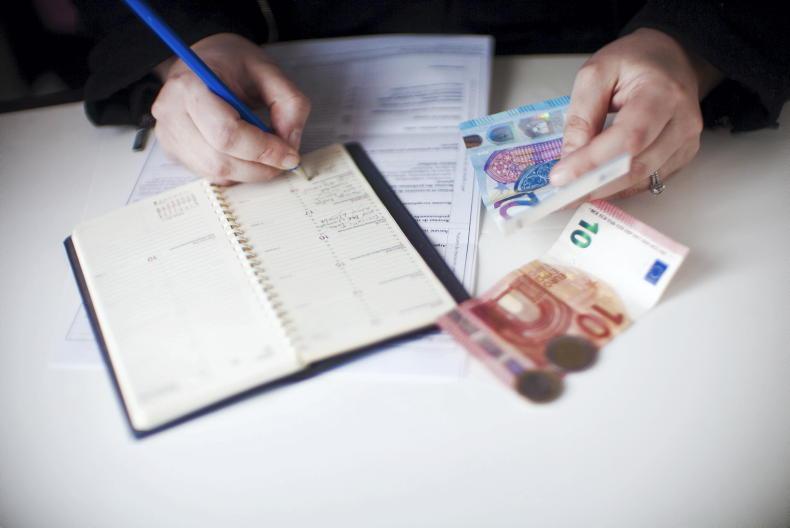John (64) has been farming with his daughter Patricia (32) for three years. They have a 70-acre suckler to beef enterprise and Patricia also has an off-farm job. John is concerned about the tax implications of transferring the land to Patricia after she turns 35 but he is not yet ready to retire. Should he transfer the land now to avoid paying excess tax later?
The first thing that both John and Patricia must look at is their ages. John, being 64 years of age, must consider that if he were to transfer now how does he support himself and his wife up to the time of pension age at 66. A wider implication arises around Patricia. Patricia, being 32 years of age, should look at doing the relevant farm qualification. By taking on a relevant farm qualification, it will enable Patricia to do the following:
To avail of unrestricted young trained farmer stamp duty relief over the next couple of years before she is 35. In addition it may entitle her to be regarded as a young farmer within the Department of Agriculture and to be entitled to extra top-up grants as she is under 40 years of age. If transferred before Patricia reaches 35, there is no stamp duty provided conditions are met.Looking at the tax aspect of the transfer, there are a number of important issues to look at. If the transfer is not taking place for three years, one should look at entering into a registered partnership for five years, with Patricia getting a minimum of 20% of the profit. The balance of 80% goes to John. By entering into a registered partnership, it opens up the potential of a registered succession partnership after three years whereby the farm can potentially get a €25,000 tax saving, that is €5,000 a year over the intervening five years or up to the date of transfer.
The moment the land is transferred, the succession tax credit ceases. As Patricia will be 35 in three years time and if John wanted to transfer it in three years, the maximum credit that could be gotten is within three or four years. Patricia would have to examine whether she would qualify for agriculture relief at the date of the transfer. If Patricia does not qualify for agricultural relief, she may qualify for business relief. If business relief/agricultural relief is available, Patricia can obtain up to €320,000 of assets from her parents after the reliefs, free of tax. Any gifts since 5 December 1991 are now taken into account.
John would have to seriously consider Capital Gains Tax (CGT). However, if he has owned and farmed the land for over 10 years, CGT would not be an issue.
If they hold on until after Patricia is over 35 years of age, the CGT and Capital Acquisitions Tax (CAT) position does not change but Patricia would be liable for stamp duty. At present, stamp duty on an acquisition over 35 between blood relatives would amount to 1% of the value. If one looks at the value of the land being €700,000 this would be €7,000 but if the rate increases to the full rate of 6%, this would be €42,000.
Therefore, the advice in this situation would be that up to Patricia being 35 years of age, transfer could take place without stamp duty provided certain conditions are matched.
However, if it passes Patricia’s 35th birthday, stamp duty will definitely be an issue. If one does not have three years to run prior to Patricia being 35, one would not be able to avail of the nil stamp duty rate and the succession credit as one must be in the registered partnership for three years prior to the transfer.
Serious consideration needs to be given to all the options here and they also need to remember to look at income tax.
John (64) has been farming with his daughter Patricia (32) for three years. They have a 70-acre suckler to beef enterprise and Patricia also has an off-farm job. John is concerned about the tax implications of transferring the land to Patricia after she turns 35 but he is not yet ready to retire. Should he transfer the land now to avoid paying excess tax later?
The first thing that both John and Patricia must look at is their ages. John, being 64 years of age, must consider that if he were to transfer now how does he support himself and his wife up to the time of pension age at 66. A wider implication arises around Patricia. Patricia, being 32 years of age, should look at doing the relevant farm qualification. By taking on a relevant farm qualification, it will enable Patricia to do the following:
To avail of unrestricted young trained farmer stamp duty relief over the next couple of years before she is 35. In addition it may entitle her to be regarded as a young farmer within the Department of Agriculture and to be entitled to extra top-up grants as she is under 40 years of age. If transferred before Patricia reaches 35, there is no stamp duty provided conditions are met.Looking at the tax aspect of the transfer, there are a number of important issues to look at. If the transfer is not taking place for three years, one should look at entering into a registered partnership for five years, with Patricia getting a minimum of 20% of the profit. The balance of 80% goes to John. By entering into a registered partnership, it opens up the potential of a registered succession partnership after three years whereby the farm can potentially get a €25,000 tax saving, that is €5,000 a year over the intervening five years or up to the date of transfer.
The moment the land is transferred, the succession tax credit ceases. As Patricia will be 35 in three years time and if John wanted to transfer it in three years, the maximum credit that could be gotten is within three or four years. Patricia would have to examine whether she would qualify for agriculture relief at the date of the transfer. If Patricia does not qualify for agricultural relief, she may qualify for business relief. If business relief/agricultural relief is available, Patricia can obtain up to €320,000 of assets from her parents after the reliefs, free of tax. Any gifts since 5 December 1991 are now taken into account.
John would have to seriously consider Capital Gains Tax (CGT). However, if he has owned and farmed the land for over 10 years, CGT would not be an issue.
If they hold on until after Patricia is over 35 years of age, the CGT and Capital Acquisitions Tax (CAT) position does not change but Patricia would be liable for stamp duty. At present, stamp duty on an acquisition over 35 between blood relatives would amount to 1% of the value. If one looks at the value of the land being €700,000 this would be €7,000 but if the rate increases to the full rate of 6%, this would be €42,000.
Therefore, the advice in this situation would be that up to Patricia being 35 years of age, transfer could take place without stamp duty provided certain conditions are matched.
However, if it passes Patricia’s 35th birthday, stamp duty will definitely be an issue. If one does not have three years to run prior to Patricia being 35, one would not be able to avail of the nil stamp duty rate and the succession credit as one must be in the registered partnership for three years prior to the transfer.
Serious consideration needs to be given to all the options here and they also need to remember to look at income tax.









SHARING OPTIONS